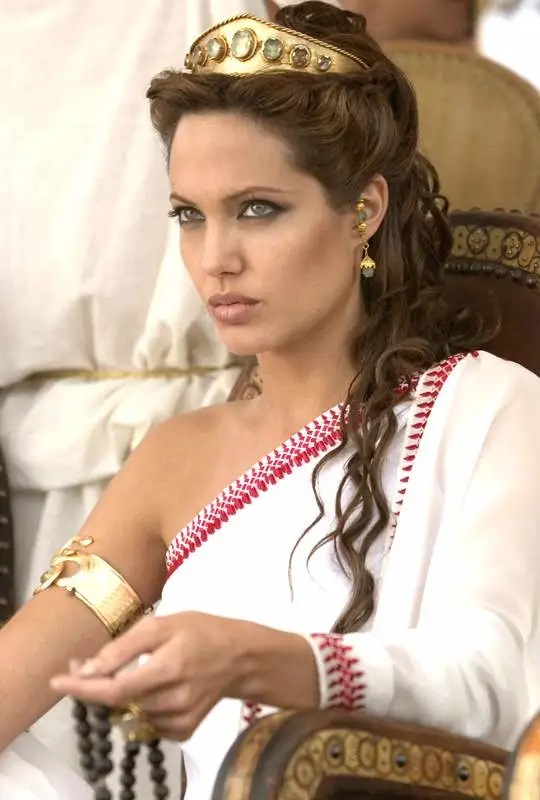...
Sobekneferu or Neferusobek (Ancient Egyptian: Sbk-nfrw) was a pharaoh of ancient Egypt and the last ruler of the Twelfth Dynasty of the Middle Kingdom. She ascended to the throne following the death of Amenemhat IV, possibly her brother and husband, though their relationship is unproven. Instead, she asserted legitimacy through her father Amenemhat III. Her reign lasted 3 years, 10 months, and 24 days, according to the Turin King List.
She adopted the full royal titulary, distinguishing herself from prior female rulers. She was also the first ruler to have a name associated with the crocodile god Sobek. Contemporary evidence for her reign is scant: there are a few partial statues – one with her face – and inscriptions that have been uncovered. It is assumed that the Northern Mazghuna pyramid was intended for her, though this assignment is speculative with no firm evidence to confirm it. The monument was abandoned with only the substructure ever completed. A papyrus discovered in Harageh mentions a place called Sekhem Sobekneferu, that may refer to the pyramid. Her rule is attested on several king lists.
The Middle Kingdom was in decline by the time of Sobekneferu's accession. The peak of the Middle Kingdom is attributed to Senusret III and Amenemhat III. Senusret III formed the basis for the legendary character Sesostris described by Manetho and Herodotus. He led military expeditions into Nubia and into Syria-Palestine and built a 60 m (200 ft) tall mudbrick pyramid as his monument. He reigned for 39 years, as evidenced by an inscription in Abydos, where he was buried. Amenemhat III, in contrast, presided over a peaceful Egypt that consisted of monumental constructions, the development of Faiyum, and numerous mining expeditions. His reign lasted at least 45 years, probably longer. He built two pyramids, at Dahshur and at Hawara. Nicolas Grimal notes that such long reigns contributed to the end of the Twelfth Dynasty, but without the collapse that ended the Old Kingdom. Amenemhat IV ruled for 9 or 10 years. There is little information regarding his reign.
It is to this backdrop that Sobekneferu acquired the throne. She reigned for around 4 years, but as with her predecessor, there are few surviving records. Her death brought a close to the Twelfth Dynasty and began the Second Intermediate Period spanning the following two centuries.
This period is poorly understood owing to the paucity of references to the rulers of the time. She was succeeded by either Sobekhotep I or Wegaf, who inaugurated the Thirteenth Dynasty. Stephen Quirke proposed, based on the numerosity of kingships and brevity of their rule, that a rotating succession of kings from Egypt's most powerful families took the throne. They retained Itj-tawy as their capital through the Thirteenth Dynasty. Their role, however, was relegated to a much lesser status than earlier and power rested within the administration. It is generally accepted that Egypt remained unified until late into the dynasty. Kim Ryholt contends that the Fourteenth Dynasty instead arose in the Nile Delta at the end of Sobekneferu's reign as a rival to the Thirteenth. Thomas Schneider argues that the evidence for this hypothesis is weak.
Sobekneferu's tomb has not yet been positively identified. The Northern Mazghuna pyramid is assumed to be her monument. There is, however, no clear evidence to confirm this assignment and the pyramid may date to a period well after the end of the Twelfth Dynasty. Only its substructure was completed; construction of the superstructure and wider temple complex was never begun. The passages of the substructure had a complex plan. A stairway descended south from the east side of the pyramid leading to a square chamber which connected to the next sloping passage leading west to a portcullis. The portcullis consisted of a 42,000 kilograms (93,000 lb) quartzite block intended to slide into and block the passage.
Beyond the passage wound through several more turns and a second smaller portcullis before terminating at the antechamber. South of this lay the burial chamber which was almost entirely occupied by a quartzite monolith which acted as the vessel for a sarcophagus. In a deep recess lay a quartzite lid which was to be slid into place over the coffin and then locked into place by a stone slab blocking it. The builders had all exposed surfaces painted red and added lines of black paint. A causeway leading to the pyramid was built of mudbrick, which must have been used by the workers. Though the burial place had been constructed, no burial was interred at the site. A place called Sekhem Sobekneferu is mentioned on a papyrus found at Harageh which may be the name of her pyramid. On a funerary stela from Abydos, now in Marseille, there is mention of a storeroom administrator of Sobekneferu named Heby. The stela dates to the 13th Dynasty and attests to an ongoing funerary cult.
Cleopatra
Hatshepsut
Nefertiti
Sobekneferu

REFERENCE
https://www.stylist.co.uk/opinion/cleopatra-lady-gaga-angelina-jolie-whitewashing-elizabeth-taylor-debate-diversity-representation/245816

CLEOPATRA
THE MUMMY - UNDER DEVELOPMENT
'Cleopatra
- The Mummy' is the sequel to 'Kulo-Luna.'
Kulo-Luna was
the first of the John Storm franchise (for which a draft
script is available to studios and actor's agents). The John Storm
franchise is a series of
ocean awareness adventures, featuring the incredible solar
powered trimaran: Elizabeth
Swann.